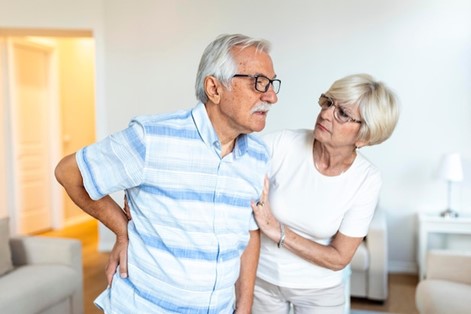Maintaining good posture is important for people of all ages, but it becomes increasingly crucial as we grow older. Poor posture can lead to a range of health issues, including musculoskeletal pain, reduced mobility, and decreased quality of life. In this blog, we will explore typical posture problems in the elderly and provide valuable tips to help them improve their posture and overall well-being.
Common Posture Problems in Seniors
- Forward Head Posture: This condition involves head sticks out forward because of too much screen time.
- Rounded Shoulders: When your shoulders hunch forward, it makes you look like slouching.
- Kyphosis: This is when your upper back rounds too much, giving you a hunched look.
- Lordosis: If your lower back curves too much inward, it can make you sway a lot.
- Forward Pelvic Tilt: When your pelvis tilts too much forward, it makes your lower back arch too much.
Impacts of Poor Posture in Older Adults
Poor posture can lead to:
- Increased risk of falling or getting hurt
- Long-lasting pain in your back, neck, and shoulders
- Less ability to move easily
- Breathing difficulties because your lungs cannot expand fully
- Digestion issues caused by compressed organs
Tips for Better Posture in Elderly
- Regular exercise like yoga or strength training can make your muscles stronger and improve your posture.
- Ensure your furniture and gadgets support good posture.
- Try to sit and stand straight, with your shoulders back and head in line with your spine.
- Take breaks from sitting too much to stretch and walk around.
- Seek guidance from a physiotherapist who can provide personalized exercises and techniques to correct posture problems.
Poor posture in the elderly can cause pain and limited mobility. Recognizing and addressing posture issues through exercises and awareness can greatly improve their quality of life. Prioritizing good posture is crucial for healthy aging, promoting comfort, mobility, and independence in daily activities.




